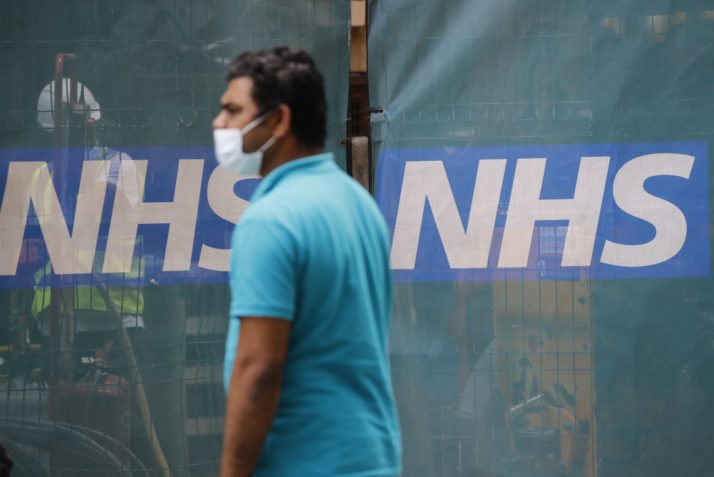Infection rates have been particularly high among young adults | Tolga Akmen/AFP via Getty Images
Sharp rise in infections in the north of England have exacerbated political tensions between London and the rest of the country.
LONDON — England’s emergency “Nightingale” hospitals will be “mobilized” again in the north of the country to provide extra capacity for local health services amid a steep rise in COVID-19 infections, NHS officials said Monday.
Stephen Powis, national medical director of NHS England, said the region’s Nightingales — based in Manchester, Sunderland and Harrogate — would be ready to take patients in the next few weeks.
It is the first time any of England’s seven Nightingale hospitals — set up at the height of the first wave of coronavirus in Europe — have been brought back into service after being placed on standby as infection rates dipped during the summer months.
Later on Monday, Prime Minister Boris Johnson is expected to set out a new three-tier system of COVID-19 restrictions for England’s regions, with parts of the north east and north west, where infections are currently significantly higher than in other parts of the country, expected to be placed in the higher tiers with the toughest measures.
Speaking at a Downing Street press conference ahead of the prime minister’s statement to MPs, England’s Deputy Chief Medical Officer Jonathan Van Tam said that while infection rates were growing across the country, the reason the epidemic was growing fastest in the north — in particular the north west — was “almost certainly” due to the fact that disease levels here “never dropped as far … as they did in the south” during the summer.
His words are likely to add weight to criticisms from local and regional leaders — including mayor of Greater Manchester Andy Burnham — that when national lockdown restrictions were eased earlier this year, it came too early for the north west where infection rates remained higher than in London and the south.
Powis, speaking alongside Van Tam, said that there were now more coronavirus patients in hospitals in England than just before national restrictions were introduced on March 23.
Hospitals in the north west and north east had seen a sevenfold increase in coronavirus patients requiring intensive care in the past four weeks, he said. “If infections continue to rise, in four more weeks they could be treating more patients than they were in the peak of the first wave.”
Infection rates have been particularly high among young adults, with the return of students to universities being linked to surging infection rates in major cities. But Van Tam said there were signs of the virus spreading to older, more vulnerable age groups.


















